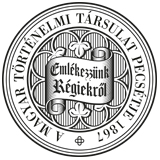Századok – 2012
KÖZLEMÉNYEK AZ 1711. ÉVI SZATMÁRI BÉKE TÖRTÉNETÉRŐL - Kis Domokos Dániel: Drámai hangulat és reális értékelés: „Magyarok Törökországban" és „Egy bujdosó kuruc". Rákóczi-kultusz a színpadon IV/961
980 KIS DOMOKOS DÁNIEL By 1863 the censors had become rather more indulgent and even understanding, yet even then a writing of Kálmán Thaly, in which he called Rákóczi the greatest Hungarian, was prohibited. The work of Ede Szigligeti called „A Wandering Rebel", with the music of Gusztáv Böhm, was played on the stage of the National Theatre on a mere four occasions. This play has never belonged to the best pieces of its genre, but even so it necessitated several rectifications and censorial deletions in 1863, most of which appear today as almost incomprehensible. In fact, it was not the dramatic atmosphere but realistic approach based on the public mood which determined what was possible at any given time. Something could be staged at Kolozsvár but not elsewhere, or the other way round. Generally speaking, censorship in Vienna was less strict than that in Buda, and after 1852 relatively few works were prohibited; post festa self-defences were rather more usual, stemming from dubious overtones or the stirrup of undesirable emotions. The basic aim was until 1906, indeed, until 1914, to prevent the emergence of an all-popular movement, a general Hungarian cult which would proclaim the independence of Hungary and the authority of the old Hungarian rulers in whatever form.
